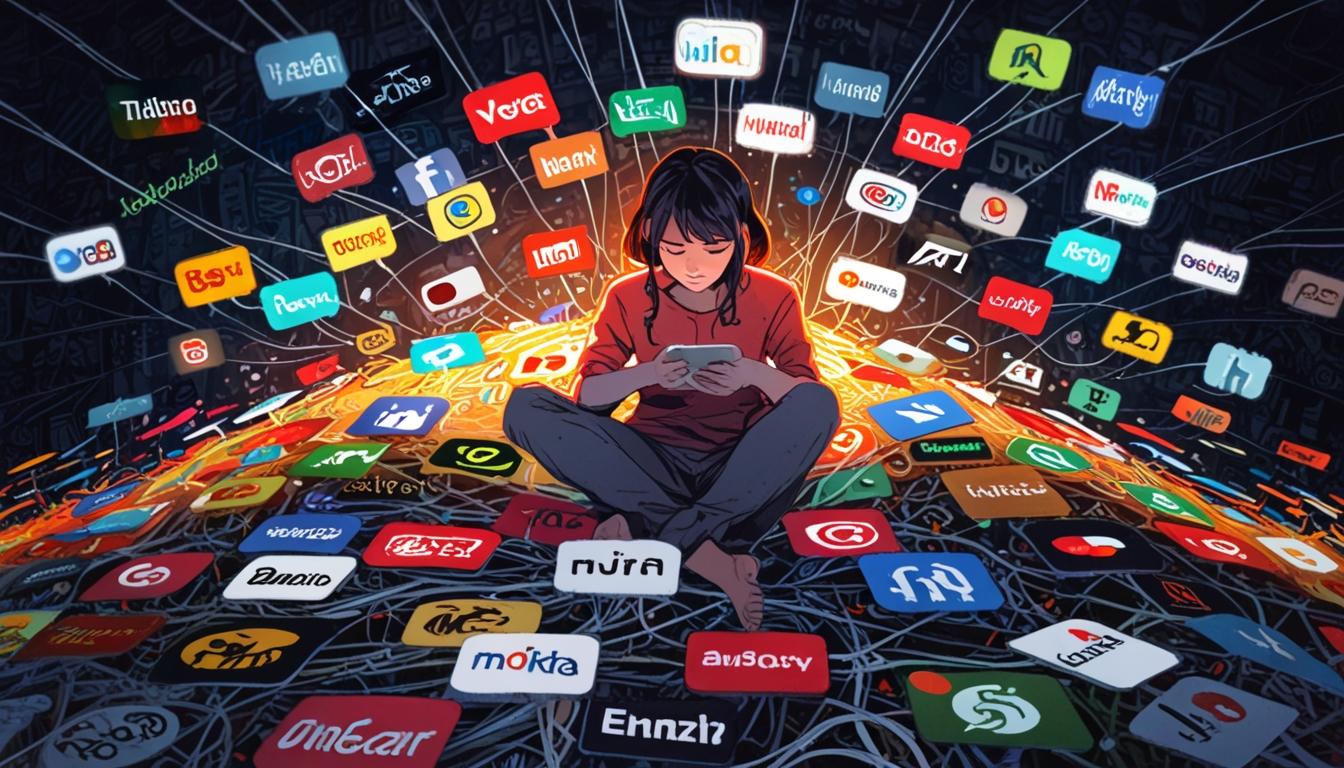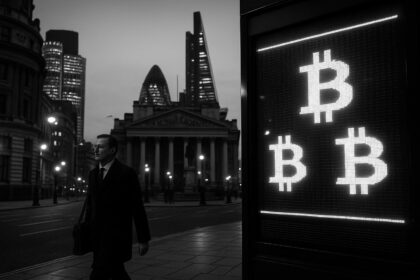Once hailed as a liberation from cable’s high costs and inflexible schedules, streaming has evolved into a fragmented market dominated by multiple paid subscriptions and bundled services, raising questions about true consumer freedom in today’s TV landscape.
When Netflix burst onto the scene, it signified a paradigm shift in how audiences consumed television. Gone were the days of hefty cable bills crammed with channels that went unwatched, set-top boxes that cluttered living rooms, and rigid scheduling that dictated viewing habits. Instead, streaming offered a world of on-demand entertainment for a flat monthly fee, free from the interruptions of ads. It embodied the promise of freedom—a freedom that now feels increasingly curtailed.
Fast forward over a decade, and the streaming landscape is drastically altered. The initial allure of seamless access to content has been overshadowed by a proliferation of streaming services, each requiring its own subscription. The result: a complex web of apps that often leaves consumers spending as much, if not more, than they did on cable. Just as users were beginning to cut the cord, they find themselves, ironically, in a similar predicament—no longer just juggling a remote control, but a host of streaming accounts.
This explosion of competition began as the realisation dawned on media conglomerates that streaming was a lucrative venture. Giants like Disney, HBO, and Apple have each carved out their niche, reclaiming beloved shows that once thrived under Netflix’s banner, thereby fragmenting what was once a singular access point for popular content. The downside of this strategy is that essential series and films are now locked behind multiple paywalls, necessitating a patchwork of subscriptions to access the breadth of must-watch programming.
As the competition intensified, so did the array of subscription options, often exacerbating consumer confusion. What started as a simpler choice of flat-rate streaming morphed into a bewildering selection of plans, tiers, and exclusive offers. Purchasing multiple services to keep abreast of the latest shows and movies inevitably drives costs up; for example, securing access to live sports may add significant expenses to an already bloated bill.
In an apparent effort to alleviate “subscription fatigue,” many companies are now reverting to a familiar model: bundling services together, reminiscent of the cable packages they once sought to disrupt. Disney offers attractive bundles that include its major platforms—Disney+, Hulu, and ESPN+—at a reduced rate compared to purchasing them separately. Similarly, Amazon and Apple have initiated their bundle strategies, creating all-in-one packages that provide convenience but often compel users to pay for content they may never engage with. This scenario echoes earlier frustrations with traditional cable subscriptions, where consumers felt compelled to pay for a vast array of channels—most of which went unused—to access a handful of key options.
While these bundles can present savings for families or diverse users, they also raise a significant concern: the value proposition often skews heavily in favour of the providers. By encouraging users to combine services, companies may inflate subscriber numbers whilst minimising customer churn. This manoeuvre becomes particularly crucial as market saturation looms—if viewership of one service dwindles, its survival can rely on its association with a more popular counterpart. Such bundling often serves to obscure declines in engagement, thrusting struggling platforms into a more stable financial state, albeit at the expense of transparency for the viewer.
Moreover, the advent of live television streaming has not fully recreated the ease of access enjoyed by cable. The need to juggle several subscriptions for sports and local channels demonstrates a precarious balance that frustrates many users. While platforms like YouTube TV and Hulu + Live TV promise live coverage, they come with price tags that can rival traditional cable bills, negating the initial appeal of streaming.
This regression towards bundled services points to an uncomfortable truth: the streaming revolution is parading under a banner of innovation while reverting to stale models of the past. Consumers who once embraced streaming for its promise of selective, on-demand excellence now find themselves ensnared in a complex hierarchy of costs, diminishing flexibility, and subscription lock-in situations.
Amidst these pressures, alternative models for consumption have emerged. The rise of free ad-supported television (FAST) platforms—think Pluto TV and Tubi—promises to offer a semblance of the cable experience without the associated costs. These alternatives cater specifically to casual viewers but fail to satisfy the die-hard fans yearning for premium content or live sports.
As the streaming landscape continues to evolve, it’s apparent that consumers now inhabit a world that feels increasingly reminiscent of the cable era they sought to escape. The promise of choice and control that once defined streaming is shadowed by logical contradictions of rising costs and bundled content. In a landscape where a few key players hold sway over the majority of viewing options, the cord-cutter’s path may not be as liberating as once believed, prompting a deeper examination of what it truly means to engage with television in the modern age.
Reference Map
Paragraph 1 – [1]
Paragraph 2 – [1]
Paragraph 3 – [1]
Paragraph 4 – [1]
Paragraph 5 – [1], [2]
Paragraph 6 – [1], [3], [4]
Paragraph 7 – [1], [3], [4], [5]
Paragraph 8 – [1], [6]
Paragraph 9 – [1], [5], [7]
Paragraph 10 – [1]
Source: Noah Wire Services
- https://www.androidpolice.com/streaming-bundles-recreating-cable/ – Please view link – unable to able to access data
- https://www.axios.com/2024/05/21/comcast-streamsaver-bundle – Comcast introduced the StreamSaver bundle, combining Peacock, Netflix, and Apple TV+ for $15-$30, aiming to offer broadband customers significant discounts and attract new subscribers as streaming services near market saturation in the U.S. ([axios.com](https://www.axios.com/2024/05/21/comcast-streamsaver-bundle?utm_source=openai))
- https://agoodmovietowatch.com/cord-cutting/best-live-tv-streaming-bundles/ – This article reviews top live TV streaming bundles, including Paramount+ with SHOWTIME, NOW TV with NOW internet, and others, highlighting their features, pricing, and device compatibility. ([agoodmovietowatch.com](https://agoodmovietowatch.com/cord-cutting/best-live-tv-streaming-bundles/?utm_source=openai))
- https://www.americantv.com/streaming-bundles-to-replace-cable.php – An overview of leading streaming service bundles, such as Hulu + Live TV, Netflix with Partner Add-Ons, Disney Bundle, and others, detailing their pricing, unique features, and available content. ([americantv.com](https://www.americantv.com/streaming-bundles-to-replace-cable.php?utm_source=openai))
- https://uaetimes.ae/10-best-streaming-bundles-of-2023/ – A list of the best streaming bundles of 2023, including Sling TV Orange & Blue, Hulu + Live TV, YouTube TV + Entertainment Plus, and others, with key specifications, pros and cons, and recommendations. ([uaetimes.ae](https://uaetimes.ae/10-best-streaming-bundles-of-2023/?utm_source=openai))
- https://ew.com/tv/best-streaming-bundles/ – An article discussing the best streaming bundles of 2024, featuring options like Sling TV Orange & Blue and YouTube TV + Entertainment Plus, with details on pricing, features, and availability. ([ew.com](https://ew.com/tv/best-streaming-bundles/?utm_source=openai))
- https://financebuzz.com/streaming-bundles-deal-for-the-holidays – Verizon announced a $10 bundle for ad-supported plans from Netflix and Max, and a $20 bundle including ad-free Disney+, Hulu, ESPN+, Netflix, and Max, aiming to entice customers with significant savings. ([financebuzz.com](https://financebuzz.com/streaming-bundles-deal-for-the-holidays?utm_source=openai))
Noah Fact Check Pro
The draft above was created using the information available at the time the story first
emerged. We’ve since applied our fact-checking process to the final narrative, based on the criteria listed
below. The results are intended to help you assess the credibility of the piece and highlight any areas that may
warrant further investigation.
Freshness check
Score:
6
Notes:
The narrative references contemporary streaming services and recent trends but lacks specific dates or news that would automatically classify it as brand new. The discussion about overall industry shifts is general and aligns with ongoing discussions in the media.
Quotes check
Score:
10
Notes:
The text does not include any direct quotes that could be verified against earlier sources.
Source reliability
Score:
8
Notes:
The narrative originates from a reputable technology news platform (Android Police). While it is not as universally recognized as major news outlets like the BBC or Reuters, it is a well-established voice in the technology sector.
Plausability check
Score:
9
Notes:
The claims made about the evolution of streaming services and the return to bundled models are plausible and align with current industry trends and observations.
Overall assessment
Verdict (FAIL, OPEN, PASS): PASS
Confidence (LOW, MEDIUM, HIGH): MEDIUM
Summary:
The narrative is plausible and well-supported by current trends in the streaming industry. It lacks specific dates or recycled quotes, suggesting it is a contemporary analysis. However, its freshness score is moderate due to the general nature of its observations.













